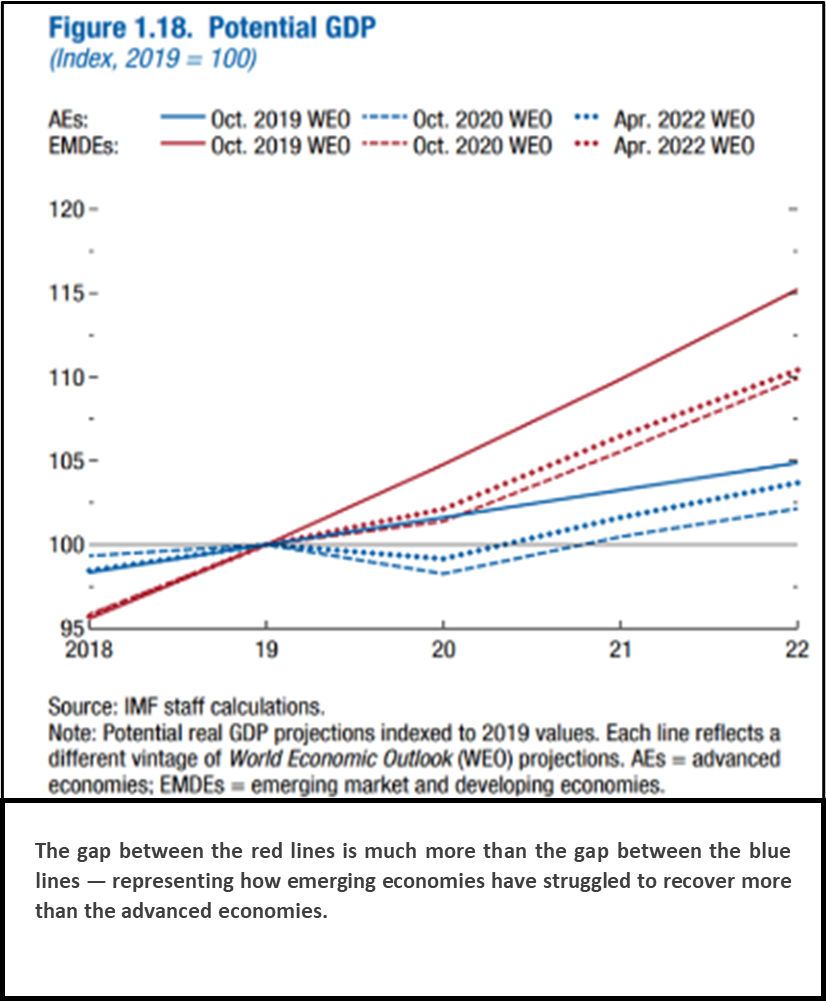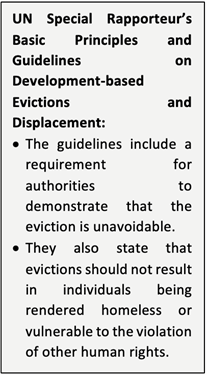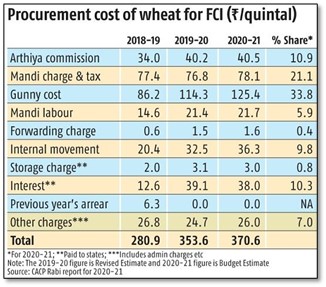Thursday, 28th April 2022
Crude Oil Pricing
In News
Raising the issue of high fuel prices, the PM has urged states to cut VAT on fuel prices.
About the News
- The Centre had cut excise duty on petrol and diesel and directed the states to reduce VAT on the same in November 2021 seeing an exceptional fuel price rise, and transfer the benefits to the consumers.
- According to the Central government, states like Maharashtra, West Bengal, Telangana, Andhra Pradesh, Tamil Nadu, Kerala, Jharkhand did not do so.
- States have demanded the Centre clear their GST dues, as a reduction of VAT may affect state finances.
How are Fuel Prices determined in India?
- Since 2017, base Crude oil prices are determined on a daily basis by the Oil Marketing Companies (OMCs) like IOCL, BPCL and HPCL, in line with a 15-day rolling average of benchmark prices of the petroleum products.
- OMCs had held the prices of both fuel constant, when the Centre announced the excise duty cut in November 2021.
- The prices were hence revised in March and hiked petrol prices by Rs 12 per litre and diesel prices by Rs 10 per litre.
- Pricing by OMCs is overseen by the PPAC (Petroleum Planning and Analysis Cell) under the Ministry of Petroleum and Natural Gas.
- Retail Price is determined by adding taxes and dealers commission to the base price.

Factors affecting retail crude oil price
- Crude Oil Cost: It is unrefined oil, the price of which fluctuates with demand and supply imbalance, foreign relations and future reserves and supplies.
- India imports Brent crude oil from the Organisation of the Petroleum Exporting Countries (OPEC) countries.
- Increased Demand: With an increase in vehicle-owning population, demand increases which affects its price.
- Taxes: Prices change as per the changes in government policies imposing tax on fuels which includes the excise duty (Charged by the Centre) and the value added tax (VAT) (Charged by the State Governments).
- Central and state taxes currently account for about 43 per cent of the retail price of petrol and about 37 per cent of the pump price of diesel in Delhi.
- Rupee and Dollar: When dollar strengthens against Indian rupee, buying cost of OMCs increase, and hence the price of petrol.
Importance of excise duty and VAT for Centre and States:
- The reluctance to reduce excise duty and VAT on fuel stems from the fact that it constitutes an important source of revenue for both the Union government and the states.
- Excise duty on fuel makes up about 18.4 per cent of Centre’s gross tax revenues.
- Petroleum and alcohol, on an average, account for 25-35 per cent of the own tax revenue of states, as per the Study of Budgets 2020-21 by the Reserve Bank of India.
- Of the total revenue receipts of states, Central tax transfers comprise 25-29 per cent, while own tax revenues have a share of 45-50 per cent.
- Petroleum taxes with states are shared only out of basic excise duty. The Centre also levies additional excise duty and cesses on petroleum products.
- During April-December 2021, of Centre’s total taxes on crude oil and petroleum products, excise duty amounted to 84.8%, while cess was 15.16%.
Sources:
Selection of Vice-Chancellors
In News
The Tamil Nadu Assembly has recently passed two Bills that seek to transfer the Governor’s power in appointing Vice-Chancellors (VCs) of 13 state universities to the state government.
About the News
- The Bills have been passed in the backdrop of the State’s concern that the Governor has been disregarding the state government’s opinion on the appointments of VCs.
- This has also been the argument made by states such as Maharashtra and West Bengal in the past. The regulations, which differ from state to state, are often open to interpretation and disputes are routine.
- The Punchhi Commission had recommended that governors should not be vested with the powers that were not vested by the Constitution (appointing vice-chancellors) as it would lead to clash of functions and powers between the state government and the governor.
Highlights of the Bill
- The Bills passed in Tamil Nadu stress that “every appointment of the Vice-Chancellor shall be made by the Government from out of a panel of three names” recommended by a search-cum-selection committee.
- Currently, the Governor, as the Chancellor of state universities, has the power to pick a VC from the shortlisted names.
- The Bills also seek to empower the state government to have the final word on the removal of VCs, if needed.
- Removal will be carried out based on inquiries by a retired High Court judge or a bureaucrat who has served at least as a Chief Secretary.
UGC’s role in this regard:
- Education comes under the Concurrent List. However, entry 66 of the Union List- “coordination and determination of standards in institutions for higher education or research and scientific and technical institutions”, gives the Centre substantial authority over higher education.
- The University Grants Commission of India plays that standard-setting role, even in the case of appointments in universities and colleges.
- According to the UGC Regulations, 2018, -mostly the Governor in states shall appoint the VC out of the panel of names recommended by search-cum-selection committees.
- Higher educational institutions, particularly those that get UGC funds, are mandated to follow its regulations.
- These are usually followed without friction in the case of central universities, but are sometimes resisted by the states in the case of state universities.
Observations made by the Supreme Court in this regard
- A Bench of Justices had opined that “any appointment as a Vice Chancellor contrary to the provisions of the UGC Regulations can be said to be in violation of the statutory provisions, warranting a writ of quo warranto”.
- The Bench ruled that, “In case of any conflict between state legislation and central legislation, central legislation shall prevail by applying the rule/principle of repugnancy as enunciated in Article 254 of the Constitution as the subject ‘education’ is in the Concurrent List of the Seventh Schedule of the Constitution”.
Source:
Palm oil crisis
In News
Indonesia has recently clamped down on exports of its palm oil primarily due to hovering inflation within the nation.
About the News
- The abrupt ban on palm oil exports by Indonesia, its greatest exporter, is anticipated to rock family economics globally.
- Palm oil is among the many worlds’ most-used cooking oils, and India’s dependence on Indonesia is anticipated to deal a supply-side shock.
- Palm oil prices rose nearly 5% over the weekend following the announcement of export restrictions and finding an immediate solution will be a challenge.
What are the impacts of this step?
- Inflation: The export ban may ship meals inflation hovering as India is the most important importer of palm oil from Indonesia.
- Edible oil: Its costs may surge as a lot as 100-200% in India if the federal government fails to discover a new supply of palm oil.
- Cooking oil: Its costs are already at report ranges because the Ukraine conflict disrupted shipments of sunflower oil. Prior to the conflict, the Black Sea area made up over 75% of world sunflower oil exports.
- Impact on imports: India imports about eight million tonnes of palm oil yearly; the commodity accounts for almost 40% share of India’s general edible oil consumption basket.
- Influence on packaged items companies: Since palm oil and its derivatives are used within the manufacturing of a number of family items, the influence of the ban may eat into the margins of Indian packaged client items gamers.
- India’s import choices:
- Malaysia: India is almost certainly to show to Malaysia, the second-biggest palm oil exporter, as it exports 18 million tonnes of palm oil yearly in comparison with 30 million tonnes exported by Indonesia to plug the hole.
- Other options: India may additionally discover importing from Thailand and Africa—they produce three million tonnes every.
About National Edible Oil Mission-Oil Palm (NMEO-OP)
- The National Mission on Edible Oils - Oil Palm (NMEO-OP) has been launched in the year 2021 with the aim to augment the availability of edible oil in the country by harnessing area expansion, increasing crude palm oil production with the aim to reduce the import burden.
- The salient features of NMEO-Oil palm include assistance for planting material, inputs for intercropping upto gestation period of 4 years and for maintenance, establishment of seed gardens, nurseries, micro irrigation, bore well/pumpset/water harvesting structure, vermi compost units, solar pumps, harvesting tools, custom hiring centre cum harvester Groups, farmers and officers training, and for replanting of old oil palm gardens etc.
- NMEO-OP is a Centrally Sponsored Scheme and aims to have an additional 6.5 lakh hectares for palm oil by 2025-26.
- Potential edible oilseeds: It includes soybean, rapeseed and mustard, groundnut, sesame, sunflower, safflower and niger are also grown in the country. Potential districts for these crops have been identified on the basis of land suitability and average yield.
- Effective management: Oil palm requires less water compared to crops like rice, banana and sugarcane for its optimum cultivation. Thus, emphasis has been given to promote micro irrigation and water conservation in oil palm for efficient water management and judicious use of water.
- Special Focus: The scheme lays special focus on India’s North-Eastern (NE) states and the Andaman and Nicobar Islands due to the conducive weather conditions in the regions.
- A provision of Rs 5 crore of 5 mt/hr (million tonne per hectare) with pro-rata increase for higher capacity will be given in these regions to attract industry.

Sources:
Bajirao I
On April 28, 1740 Bajirao I died at the age of 39. Bajirao I was a noted general who served as Peshwa (Prime Minister) to the fourth Maratha Chhatrapati (king) Shahu from 1720 until his death. Regarded as the most influential of the nine Peshwas from the Bhat family, Bajirao I changed the map of India in the mid-eighteenth century. During his 20 years of military course, Peshwa Bajirao I was never beaten in a battle and always rejoiced victory. A senior British General, Bernard Montgomery called Bajirao's victory at Palkhed as a "masterpiece of strategic mobility".
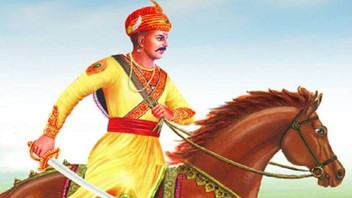
Source:
National Industrial Corridor Development Programme
In News
Commerce and industry minister said that the government will foreclose those projects under the National Industrial Corridor Development Programme where states fail to deliver land in a time-bound manner.
The National Industrial Corridor Development Programme
- National Industrial Corridor Development Programme is India's most ambitious infrastructure programme aiming to develop greenfield manufacturing hubs and new industrial cities as "Smart Cities", converging next generation technologies across infrastructure sectors.
- It is being implemented in close cooperation with the State Governments who provide land as their share of equity in the programme.
- Industrial nodes and projects are being developed under the programme to facilitate manufacturing investments and increasing our participation in the global value chains.
- 32 Projects in 4 Phases under 11 Corridors form NICDP with the support of various flagship schemes of the Government of India like Bharatmala, Sagarmala Waterways, Railways, Dedicated Freight Corridors, National Gas Grid, Airports etc.
- The Delhi Mumbai Industrial Corridor was the first corridor taken up for development in 2011.
- Subsequently, other industrial corridors viz. Amritsar- Kolkata, Chennai-Bangalore, Vizag-Chennai, East Coast etc. were added to be part of the umbrella NICDP.
- The National Industrial Corridor Development and Implementation Trust (NICDIT) under the DPIIT is the overarching institutional framework to implement the programme.
- Each Industrial Corridors is envisaged to be implemented by a Special Purpose Vehicle (SPV) in the form of a company set up under the Companies Act, 2013 as a joint venture between the central and the state governments.
- The overall sanctioned corpus of Rs. 20,084 crore. In 2021, the Asian Development Bank (ADB) approved a $250 million loan to support the Government of India’s National Industrial Corridor Development Program (NICDP).
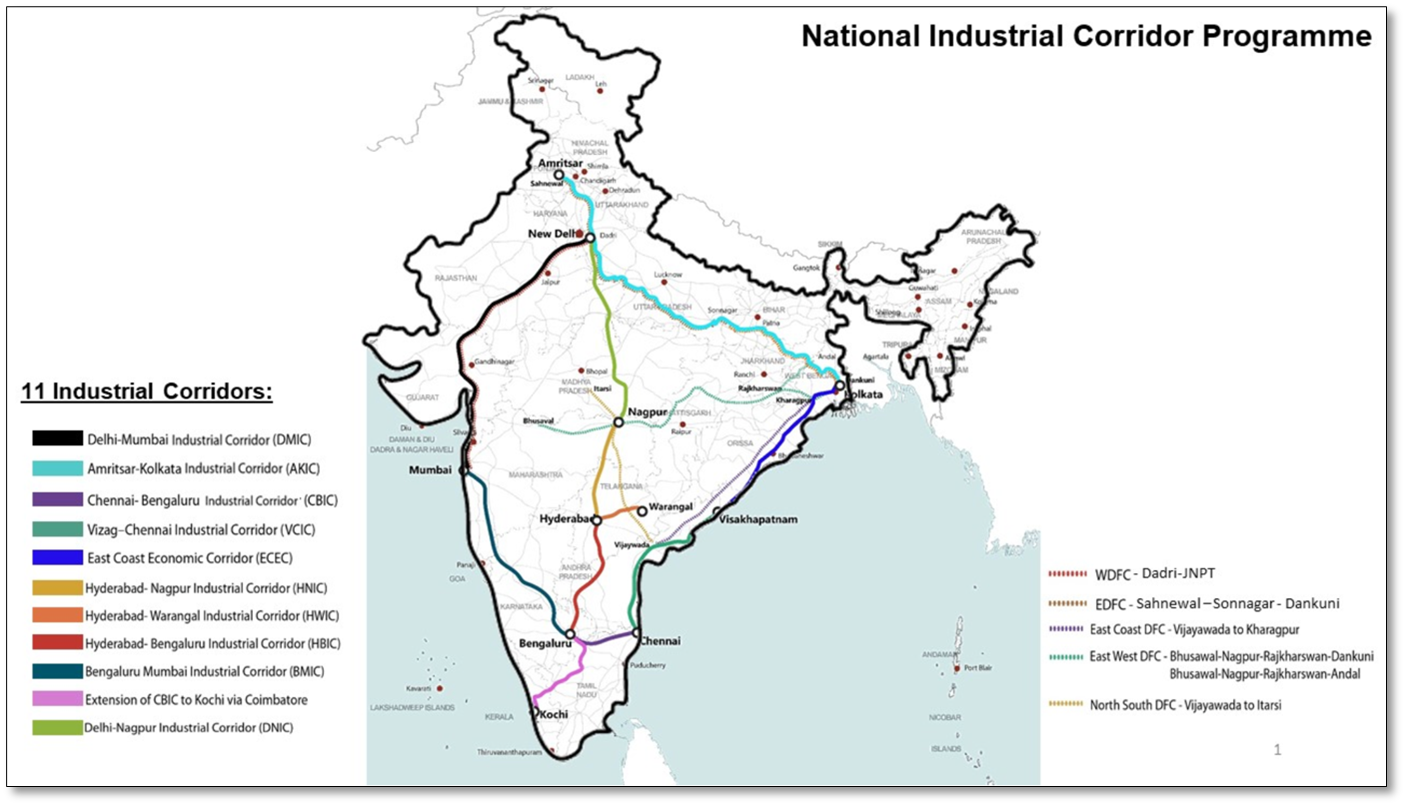
Objectives of the Programme
- The broad objective of NICDP is to provide plug and play infrastructural facilities for setting up large scale manufacturing units.
- The programme is meant to compete with the best manufacturing and investment destinations in the world by converging next generation technologies across different sectors.
- The facilities under the NICDP are being offered as a showcase to potential global investors in the shifting of their large-scale manufacturing investments post Covid-19 pandemic.
- It is also expected to help in realizing the goal of Atmanirbhar Bharat by encouraging large scale domestic manufacturing and placing India as a strong player in the global value chain.
NICDP and sustainable growth
- Statutory clearances including the environment clearance are being taken beforehand for respective nodes/cities under development to avoid any delays.
- The industrial corridors are being planned and developed, along multiple multimodal transportation spines, such as rail or national highways.
- Thus, they have the potential to infuse equitable and sustainable urbanisation by creating economic nodes across the country, and thereby reducing the need for migration to the mega cities of India.
- NICDC nodes shall integrate several Government of India schemes under one common initiative to spur planned urban development addressing the challenges around sustainability and climate change.
- Good connectivity to other parts of the country enhances the demand and supply chain of the manufactured goods. This will also improve the import and export of manufactured goods globally.
- Also, Good industrial development will increase employment opportunities in the industrial city leading to the growth of the economy of the people in the cities
Problems with NICDP
- Recently, the Parliamentary Standing Committee on Commerce had observed that a massive shortfall in the budgetary allocation of over Rs 1,900 crore by the finance ministry to the industry department may have an adverse impact on the implementation of infrastructure (infra) projects in 2022-23 (FY23).
- Further, the tardy progress of the NICDIT, reflected in the slow pace in the utilisation of allocation, according to the committee.
- Private participation in infrastructure projects have been a difficulty. With GST collections faltering, States may find it difficult to discover finances to fund the projects
- According to the constitution Article 243Q, it is stated that a body of bureaucrats and private companies will form a Special Purpose Vehicle for implementation.
- This may lead to deferment of elected bodiese. municipalities and gram panchayat, which will suspend the democratic power in these areas or cities and will be governed by a single managerial body or an individual.
- The other challenge faced by the cities is in acquiring land. People with land ownership in undeveloped areas do not agree to transfer land to the government. They fear this industrial project will lead to loss of land and livelihood from them.
- Environmental Concerns:
Way Forward:
- Finance minister recently said that there is a need to explore public private participation (PPP) mode for viable projects and use government funding for pushing infrastructure projects which can’t be done through that mode.
- Ministries or departments should actively work on getting project funded through innovative structuring and financing, provide all the help and support to private sector for enhanced infra spending.
- FM also asked secretaries of respective ministries and departments to ensure their full engagement in NIP implementation, updation on NIP portal and expedite implementation of NIP projects.
- Regular review meetings will be held going forward.
Conclusion: NICDP will play a critical role in revitalizing the economy post pandemic. But the success of the Programme depends on the synergistic working of the Central and State governments, and the Private Sector. All the stakeholders need to work at par for creating a world class infrastructure for manufacturing in India.
Question: Explain the various benefits and challenge to the National Industrial Corridor programme
Sources:
- Piyush Goyal warns of project foreclosure if timelines not met under National Corridor programme
- 11 Industrial Corridors with 32 Projects to be developed in 4 phases in the country as part of National Industrial Corridor Programme (NICP)
- Industrial Corridor Projects
- NationalIndustrialCorridor-Programme
- Rs 1,900 crore deficit likely to hit infrastructure projects in FY23
- Industrial corridors as catalysts for sustainable urbanization across India
- Overview
- States must provide land for NICDC projects on fast track
- Piyush Goyal urges states to fast track National Industrial Corridor projects
- Industrial corridor projects: states sluggish, says Piyush Goyal
- Explore PPP for viable projects in National Infrastructure Pipeline, says FM Sitharaman
- Issues in the Centre’s infrastructure push
- How national monetization policy can create international-level infra and attract investors
- National Monetization Pipeline: The key to unlock untapped asset potential
Space Bricks: Mars
- Context: The scientists from the Indian Space Research Organisation (ISRO) and Indian Institute of Science (IISc) have developed a sustainable process to make ‘space bricks’.
- The process involves extracting lunar soil and using bacteria ('sporosarcina pasteurii' ) and guar beans to harden the soil into brick-like structures for habitation on the moon in the future.
- As the cost of sending 1 pound of material to outer space is currently Rs 7.5 lakh, the new process has greatly reduced the cost, as urea, sourced from human urine and lunar soil will be used as raw materials for the construction on the moon's surface.
- As guar gum is used instead of cement for structures, space bricks will also lower carbon footprint in the lunar atmosphere.
- The material for the brick can be fabricated into any free form or shape, using a lathe thus circumventing the need for specialised moulds, a common problem when trying to make a variety of shapes by casting.
- The expertise can be used to make interlocking structures for construction on the moon without additional fastening mechanism.
- The making of space bricks brings biology and mechanical engineering together and using them to assemble structure for habitation on the moon's surface.

Source:
- ISRO-IISc Develop 'space Bricks' for Mars
- ISRO-IISc Develop 'space Bricks' For Habitat Construction On Moon And Mars
Image source:
iRAD application
- Context: UT Adviser to the Administrator has launched the Integrated Road Accident Database (iRAD) project in Chandigarh recently.
- iRAD is an initiative of the Ministry of Road Transport and Highways (MoRTH), with an objective to improve road safety in the country.
- The main idea behind it is to create a Centralised Accident Database to host and access all accident related data by various departments/stakeholders.
- The data include details on causes of road accidents, road engineering defaults, negligences on the part of individuals, pattern in accidents that would help form a strategy to reduce the number of accidents.
- With iRAD, any investigation officer visiting the spot of an accident will enter all details in the app, such as day and time of the accident, type of collision, fatal/non-fatal, weather conditions, etc.
- It a feedback based system. Police, transport, road engineering/highway and health are stakeholders in this project with their defined work within the system.
- For instance, the police is responsible for visiting the spot, counting the number of accidents, Road engineering wing will look after the engineering faults etc.,
- A beta version of iRAD was launched in at least 59 districts of six states including Madhya Pradesh, Maharashtra, Karnataka, Rajasthan, Tamil Nadu and Uttar Pradesh recently.

Source:
- Explained: What is the iRAD and what is the status of accidents in Chandigarh?
- Defined: What’s the iRAD and what’s the standing of accidents in Chandigarh?
Image source:
Light Combat Aircraft (LCA)
- Context: The Hindustan Aeronautics Limited (HAL) has commenced the Main Airframe Fatigue Test (MAFT) of the Light Combat Aircraft (LCA) Mk1 airframe at Bengaluru, recently.
- MAFT tests are carried out over a period of eight to nine years to demonstrate the capability of the airframe to withstand four times the service life.
- LCA is a fighter aircraft that is on the lower side of weight, cost, and other features.
- Also known as light fighters, the aircraft provides cost-effective design and performance by selecting specific features according to requirements.
- They are considered as strategically valuable assets as a well-designed LCA can match heavier jets at a lower cost.
- Their advantages include:
- Element of surprise: Where the LCA is aware of our target before they are of us. Historically, in about 80% of the cases of air-to-air kills, the victim was unaware of the attacker till it was too late.
- Numerical superiority: Low cost, low maintenance help in producing more aircraft, which also boosts producing more pilots.
- Superior manoeuvrability: Owing to their smaller size, LCAs have better manoeuvrability that helps in getting into better positions faster to fire and score the kill.
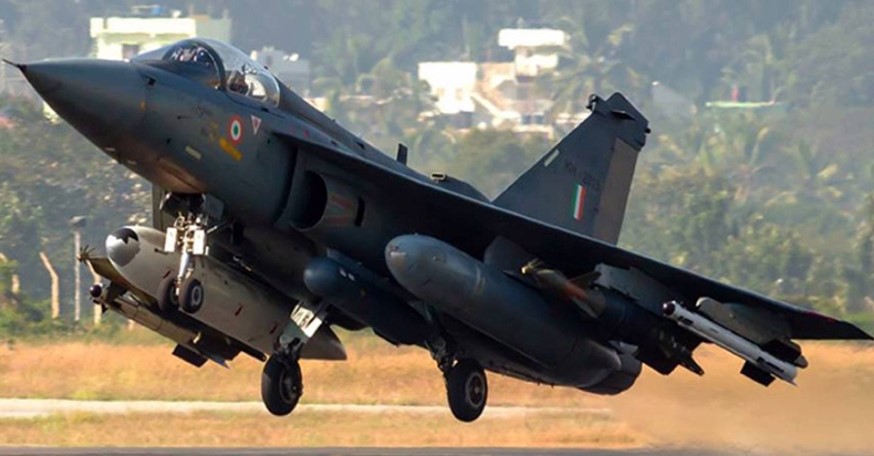
Source:
Image source:
Tilting trains
- Context: KRail corporation has been considering the possibility of introducing tilting trainsin its rapid transport system.
- A tilting trainis a train that has a mechanism enabling increased speed on regular broad-gauge rail tracks.
- As a train (or other vehicle) rounds a curve at speed, objects inside the train experience centrifugal forcewhich can cause packages to slide about or seated passengers to feel squashed by the armrest or to lose their balance.
- Tilting trains are designed to counteract thisby tilting the carriages towards the inside of the curve to compensate for the g-force.
- Thus, they can tilt while negotiating a bend or curve on the track, just as a motorbike on a winding road.
- The train may be constructed such that inertial forces cause the tilting (passive tilt), or it may have a computer-controlled powered mechanism (active tilt).
- Introducing tilting trains in the existing broad gauge rail tracks will allow Kerala to increase the speed of trains by about 20%-30%
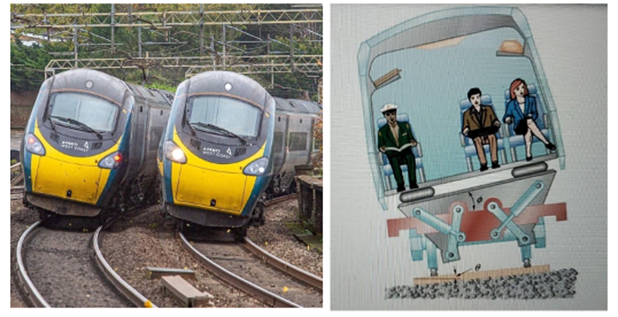
Source:
Image source:
Enable the sustainable corporate governance: Economic Times
Essence: The article is written in the context of the recent SEBI order mandating India's top 1,000 companies by market cap to report how they're promoting sustainable growth.
As per the author, Environmental, Social and Governance (ESG) is no longer a buzzword. Elements which must be part of an ESG action plan for companies are continuously monitoring performance of the equipment for their optimal utilisation, shifting to eco-friendly renewable sources of energy and including initiative to save and efficiently use energy, adopting recycling and destruction processes in industry to reduce greenhouse gases, adopting circular economy, etc.
As per the author, to start an ESG action plan, a company must start by forming a team containing a board member, lead of manufacturing and an analyst to scan the regulatory, competitive, and cross-industry landscape. The team then needs to develop a roadmap, to be shared with the board, for concerted action based on the selected metrics and baseline data. The author recommends deeper scrutiny, beyond ESG, of invisible costs and destruction of planet`s resources.
Why should you read this article?
- To know about various focus areas of environmental, social and governance initiatives.
- To know about the elements of what must be part of an ESG action plan for companies.
- To know about the authors recommendations on where to start to adopt an ESG action plan.
Source:
The post pandemic world needs better public schools: Indian Express
Essence: The editorial highlights the learning gaps and intergenerational inequality that has seeped into Indian society due to school closures and how public-school reforms could attempt to reverse the process. Parents haven’t been able to send their children to private schools due to high fees, income constraints during covid and possibility of covid wave hitting again. It has led to increased enrolment in government schools.
All around the developed world, public schools cater to 90% of the students and it is a firm belief that schools should be the last to close and first to open in any crisis. School education is valued for not only learning but the health system, moral values, gender parity and overall personality development of the individual.
India’s public schools must learn to increase expenditure in public education as education is as important as health. Govt’s subsides must receive an attention from education as well. It is only education that can provide a living with dignity and purpose. The opportunity lies in front of the government to reform public education.
Why should you read this article?
- To understand the learning gaps and its causes in Indian students.
- To know the impact of various govt reforms in public education.
Source:
Energy independence through hydrogen: The Hindu
Essence: The editorial speaks of the opportunities that hydrogen as a fuel provides for India’s future. India going through huge energy crisis, along with volatility in import prices of fuel, the country needs huge energy access for its economic and social growth. India’s per capita consumption of energy is 1/3 of the global average and 1/12 of USA.
Hydrogen as a fuel source could provide opportunities for energy independence, sustainability and security for retail and industrial demand. It could support the variable renewable energy supplies, provide for green fuel and replace the carbon intensive sectors of economy and complement the shortcomings of Li-ion as a transport fuel.
India would see escalation in demand of electrolyzer and huge water intake for hydrogen manufacturing. Concerns should be addressed by creating an assured demand, reduce price through R&D and scalability, blend hydrogen with natural gas, impose carbon tariff and develop dedicated corridors for hydrogen fuel stations. Hydrogen has the potential to transform India’s energy ecosystem.
Why should you read this article?
- To understand the benefits and challenges of hydrogen as a fuel.
- To know the opportunities and need for planning for hydrogen manufacturing in India.
Source:
Mock Test by the Ganga
Background
- Government services is a dream for most of the people in the Indian society, but the competitiveness is also very high in this regard.
- Hence, for the students humble financial background, an initiative has been started to facilitate their exam preparation.

About the Mock Test
- Every weekend, free 90-minute mock exam sessions for Railways and SSB aspirants are held at the Ganga ghats in Patna.
- These sessions are the brainchild of S K Jha, a mechanical engineer by qualification who has been in the coaching industry since 2014.
- His mission is to democratise mock tests for Railways exams, because many of these applicants come from low-income families, such as the children of daily wagers, farmers, and rickshaw drivers.
- He spends around 45000 rupees per session, and as his coaching can accommodate only 1200 students, hence he sets up the session on the Kali Ghat.
Quote: “The mediocre teacher tells. The good teacher explains. The superior teacher demonstrates. The great teacher inspires.” -William Arthur Ward
Source:
Share the article
Get Latest Updates on Offers, Event dates, and free Mentorship sessions.

Get in touch with our Expert Academic Counsellors 👋
FAQs
UPSC Daily Current Affairs focuses on learning current events on a daily basis. An aspirant needs to study regular and updated information about current events, news, and relevant topics that are important for UPSC aspirants. It covers national and international affairs, government policies, socio-economic issues, science and technology advancements, and more.
UPSC Daily Current Affairs provides aspirants with a concise and comprehensive overview of the latest happenings and developments across various fields. It helps aspirants stay updated with current affairs and provides them with valuable insights and analysis, which are essential for answering questions in the UPSC examinations. It enhances their knowledge, analytical skills, and ability to connect current affairs with the UPSC syllabus.
UPSC Daily Current Affairs covers a wide range of topics, including politics, economics, science and technology, environment, social issues, governance, international relations, and more. It offers news summaries, in-depth analyses, editorials, opinion pieces, and relevant study materials. It also provides practice questions and quizzes to help aspirants test their understanding of current affairs.
Edukemy's UPSC Daily Current Affairs can be accessed through:
- UPSC Daily Current Affairs can be accessed through Current Affairs tab at the top of the Main Page of Edukemy.
- Edukemy Mobile app: The Daily Current Affairs can also be access through Edukemy Mobile App.
- Social media: Follow Edukemy’s official social media accounts or pages that provide UPSC Daily Current Affairs updates, including Facebook, Twitter, or Telegram channels.


